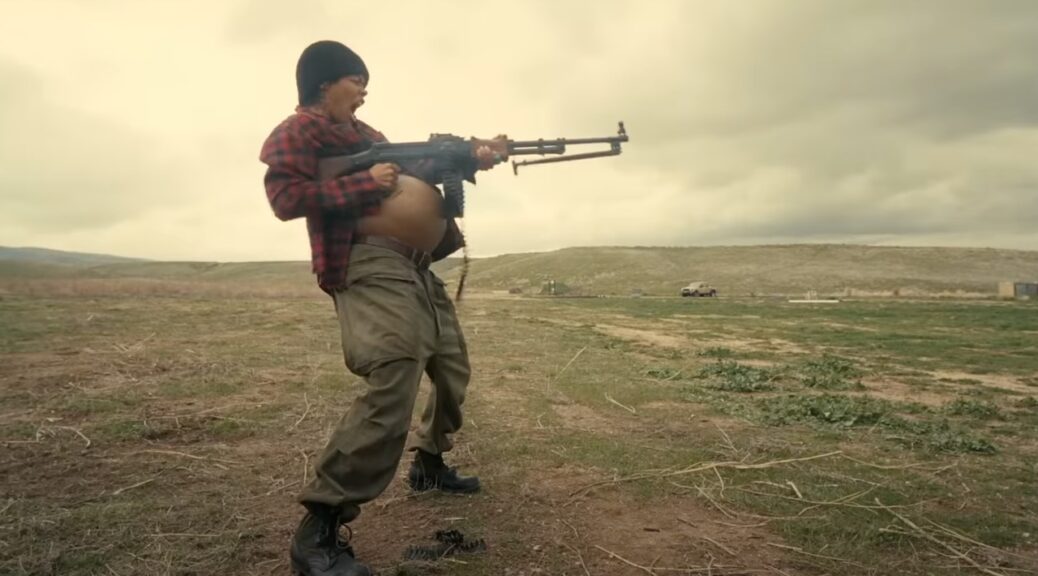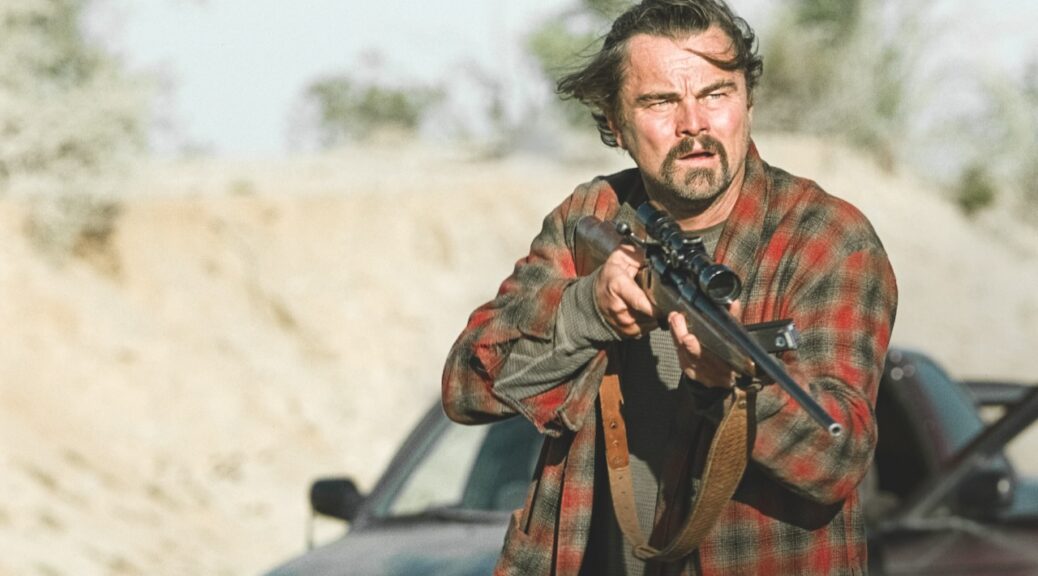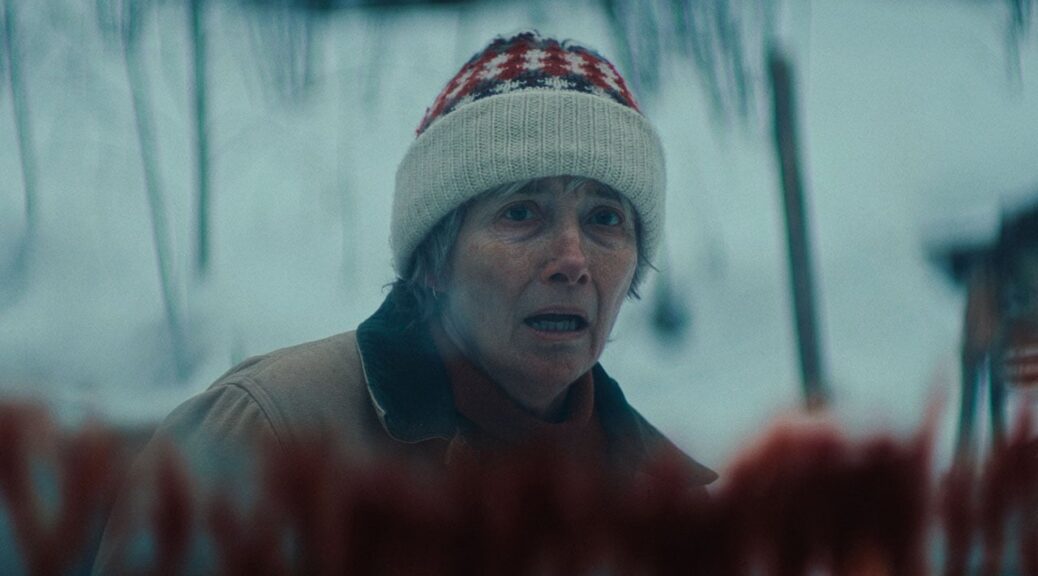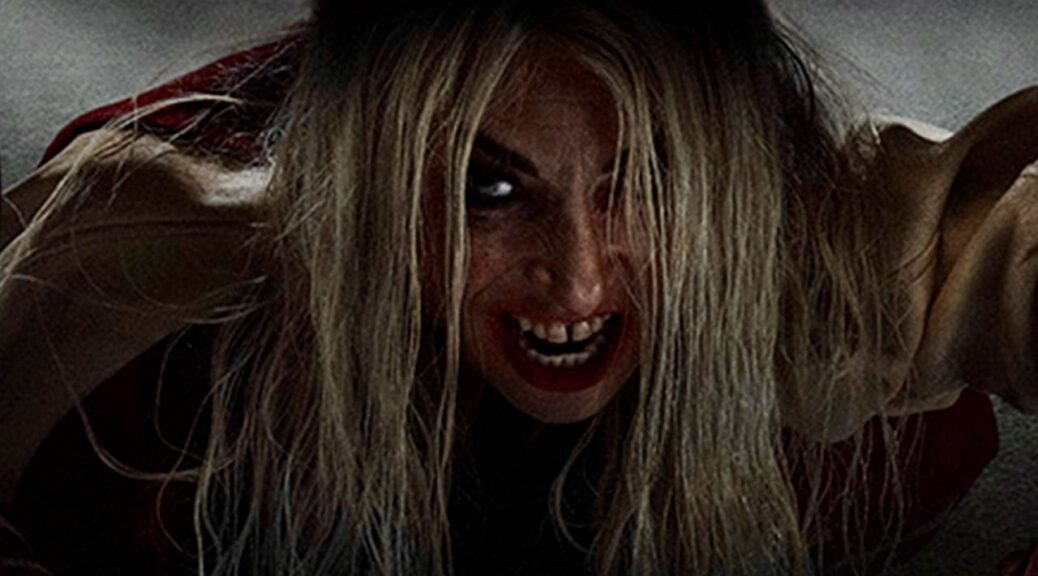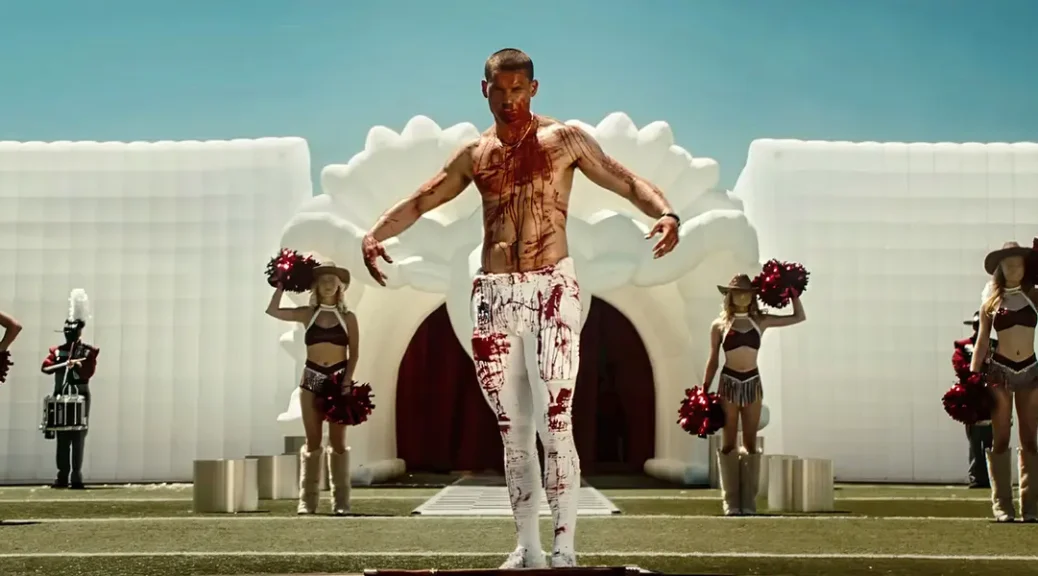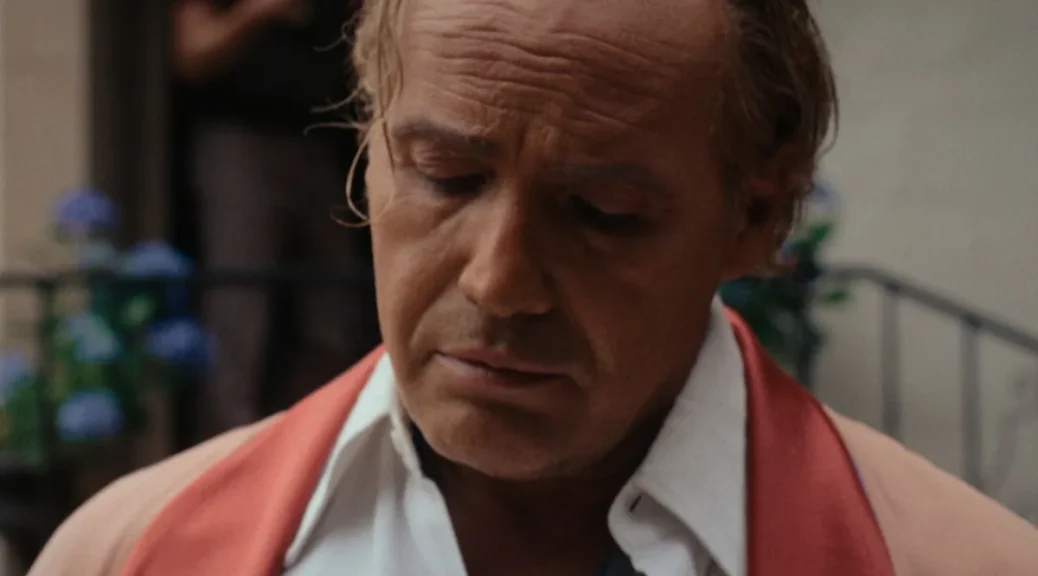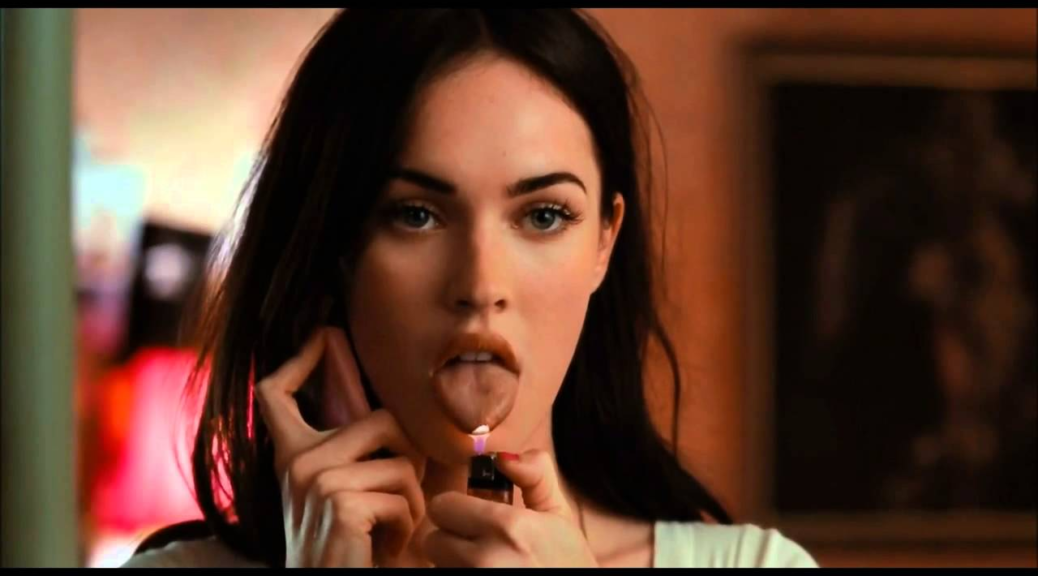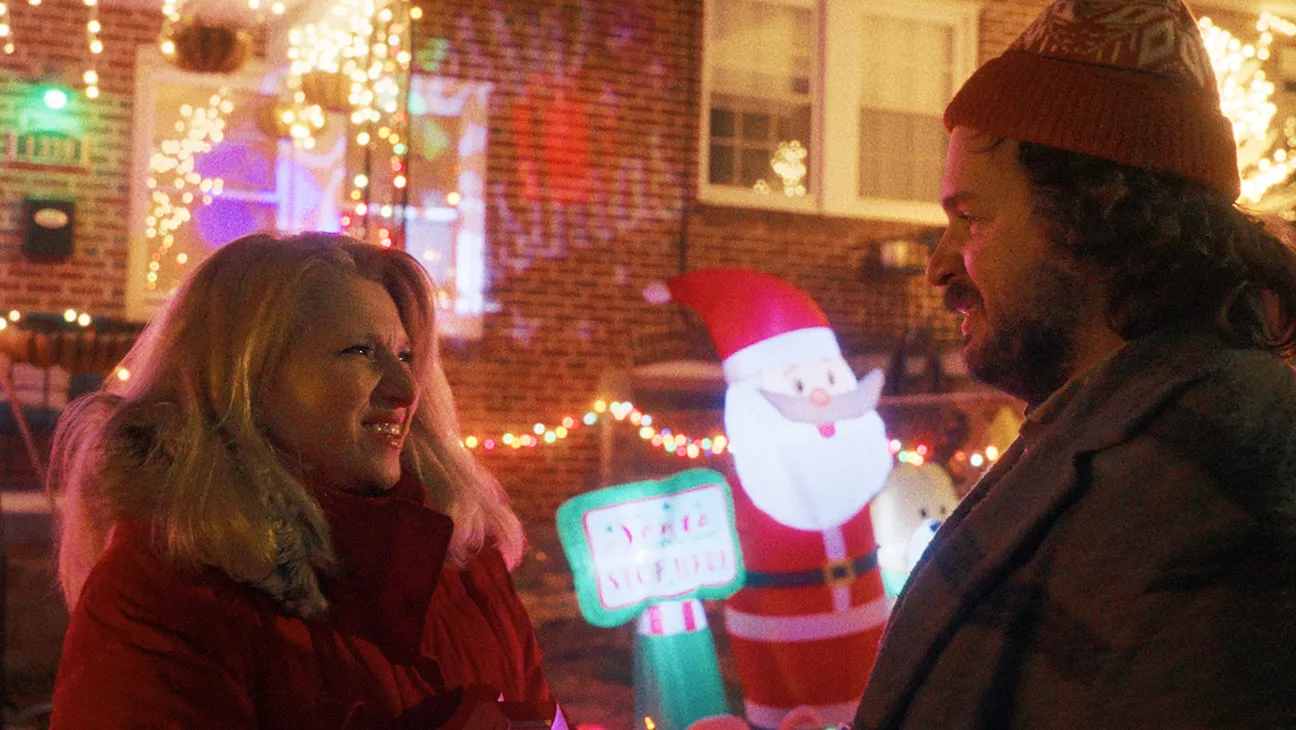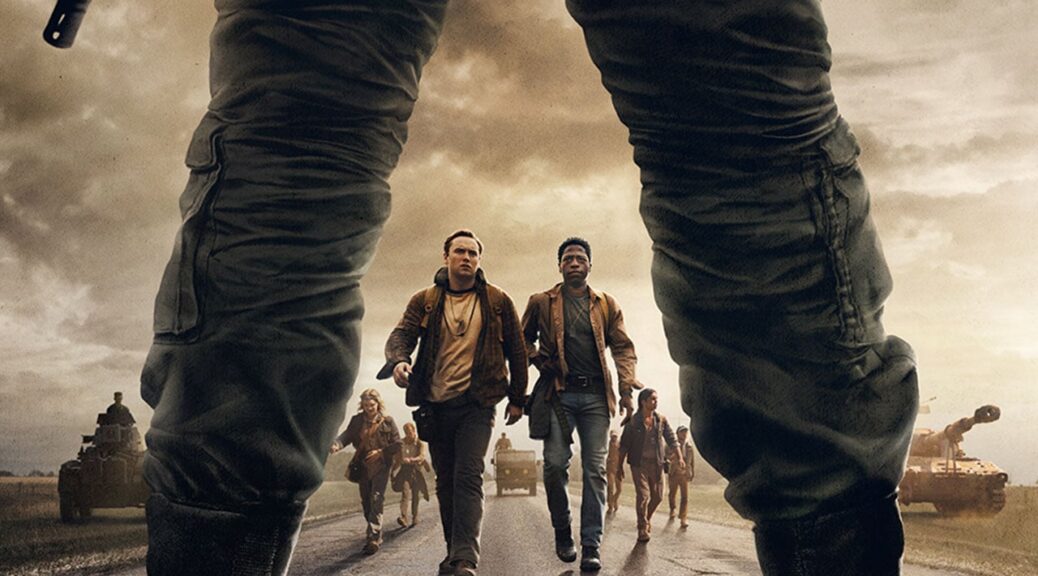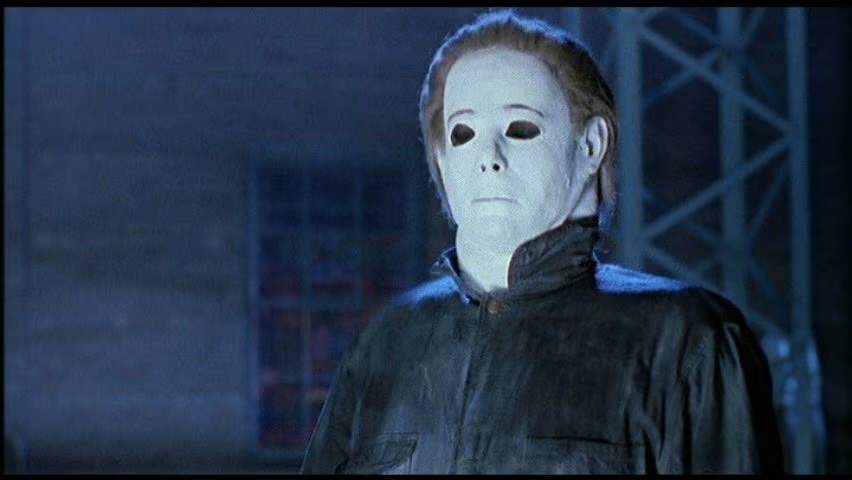Tag Archives: Madd at the Movies
Viva la Revolution
One Battle After Another
by Hope Madden
Paul Thomas Anderson, still batting 1000.
This f’ing guy! He spends four or five years directing obscure music videos, hits us with a masterpiece of modern cinema, then back to the tunes. The Phantom Thread, The Master, Boogie Nights, Punch Drunk Love, Licorice Pizza, Hard Eight, Inherent Vice, Magnolia, There Will Be Blood—you get whiplash from genre and stylistic hopscotch. But in each is a gorgeous pathos, a meticulous cinematic experience, and ensemble piece teeming with dozens of the most stunning performances you’ve ever seen.
So, you know what to expect when you sit down to One Battle After Another.
Anderson based the film on Thomas Pynchon’s Vineland, which contrasted the revolutionary spirit of America of the 1960s with the era of Ronald Reagan’s reelection. Anderson finds parallels in the generational necessity for revolution with Bob (Leonardo DiCaprio).
Years ago, Bob and Perfidia Beverly Hills (Teyana Taylor, owning the screen no matter who she shares it with) were revolutionaries disrupting W.’s ugly border policies, among other things. But everything went to hell, much thanks to Col. Steven J. Lockjaw (great name!). And about 16 years later, Lockjaw comes looking for Bob and the baby he disappeared with off-grid all those years ago (Chase Infiniti).
Sean Penn is Lockjaw, and he hasn’t been anywhere near this compelling or transformed since Milk (although he was a ton of fun in Licorice Pizza).
Though the massive cast is characteristically littered with incredible talents crackling with the electricity of Anderson’s script, Benicio del Toro stands out. He brings a laidback humor to the film that draws out DiCaprio’s silliness. While much of One Battle After Another is a nail-biting political thriller turned action flick, thanks to these two, it’s also one of Anderson’s funniest movies.
It may also be his most relevant. Certainly, the most of-the-moment. A master of the period piece, with this film Anderson reaches back to clarify present. By contrasting Bob’s paranoid, bumbling earnestness with the farcical evil of the Christmastime Adventurer’s Club, he satirizes exactly where we are today and why it looks so much like where we’ve been during every revolution.
But it is the filmmaker’s magical ability to populate each moment of his 2-hour-41-minute run time with authentic, understated, human detail that grounds the film in our lived-in reality and positions it as another masterpiece.
She’s Investigatin’…Darn Tootin!
Dead of Winter
by Hope Madden
Emma Thompson and Judy Greer go head-to-head in a kidnaping thriller set in a forsaken Northern Minnesota snowstorm? Dude, I am so in!
With Dead of Winter, Brian Kirk relies on nuanced character work, gorgeously isolating cinematography, and the desperation of human nature to keep you guessing. Thompson, who executive produces, is Barb. Barb with that Minnesota “r”. She’s hearty for a mature gal. And despite the weather forecast, she puts on the ol’ snowsuit, warms up the even older pick up, and heads to faraway Lake Hilda to do some ice fishing. And maybe something else.
But she gets a little turned around and hears chopping in the distance, so she goes to ask directions. Nobody else for miles around, what else is she to do? Barb finds a bearded man in camo (Marc Menchaca, excellent), who—very startled by the sight of her—directs her to the lake. But blood on the snow has Barb a little troubled, and soon enough, she sniffs out a kidnapping. Is she hearty enough to save that poor girl in the wood chopper’s basement?
In some ways, Dead of Winter—written by first time screenwriters Nicholas Jacobson-Larson and Dalton Leeb—feels like little more than a welcome update to a well-worn plot. A handful of flashbacks to Barb’s youth, which flesh out the film’s B-story and deepen Barb’s character, are just this side of Hallmark Channel. But Thompson, from her first determined sigh, is so utterly convincing that you’re hooked.
And that’s all before the glorious Greer makes her entrance. It’s hard to justify saying that the most versatile and employable character actor of a generation is playing against type, since Greer has played every imaginable type of character. But the blind desperation behind her unnamed (she and Barb never really get on chummy terms) character’s cruelty is so precisely wielded by this actor that you would believe this film no matter how farfetched it became.
There’s a simplicity to the storytelling that matches Kirk’s determined avoidance of cynicism. Like Barb, this movie marches on, not necessarily seeing the worst in this world even when it wouldn’t be too hard. Hard with that Minnesota “r”. But he never loses track of his chosen genre. Dead of Winter sidesteps cliché, delivers thrills, and finds new ways to showcase two tremendous talents.
Fright Club: Naomi Grossman and HIM
Had a blast talking with Friend of the Podcast Naomi Grossman, co-star of Him as well as American Horror Story, 1BR and more.
Living Deliciously
Him
by Hope Madden
The goat is an apt image to anchor a sports film. The Greatest Of All Time. Every athlete’s dream. If you’ve ever watched horror, goats are also excellent avatars for evil. In the case of Him, co-writer/director Justin Tipping’s feature from Jordan Peele’s Monkey Paw Productions, it’s a bit of both.
Isaiah White (Marlon Wayans) lives deliciously. Is Cameron Cade (Tyriq Withers) ready for that? Cade is the up-and-comer, the college QB who may be the one man to dethrone legendary Saviors quarterback, White. The 8-time champion came back even after the bone-protruding leg injury Cam’s late father made him watch again and again as a child.
Why would a father make a child watch something like that? To learn what it means to be a man, naturally.
Him is dense with themes and imagery, beginning with the very real frights of traumatic brain injury and its effect on football players. But the larger horror is rooted in performative masculinity, of proving your physical superiority by overpowering an opponent, drawing first blood, drawing last blood, and calling it power when it’s simply entertainment for puny white men with money.
Tipping equates the mechanics of sizing up an athlete with preparation for an auction block in one of the film’s most quietly unnerving sequences. Later references to gladiators obediently entering the pit at the behest of their trainers serve as additional, hardly subtle, illustrations of the power dynamic afoot.
Withers’s overwhelmed acolyte feels more dopey than wide-eyed, but Wayans is slippery, diabolical fun as the primary antagonist. Naomie Grossman steals scenes as White’s biggest fan, and Tim Heidecker’s disingenuous smarm fits perfectly as Cade’s agent.
There’s an intriguing half to this film. It’s the half making points about the way those with a financial stake in the game proselytize brutal sacrifice in search of greatness. The delicious living half, though, feels like a cheat.
The supernatural elements in Him give way to a foggy mythology full of fever dream smash cuts and jump scares. At times—as on a shooting range—details are left delightfully, grotesquely vague. Elsewhere the ambiguity feels like narrative weakness.
Worse still, the supernatural side of the film, to a degree, lets capitalism and white supremacy off the hook, no matter how satisfying the final bloodletting may feel. The set design is evocative and cinematography impresses, but the film can’t quite live up to expectations.
One Step Up, Two Steps Back
Waltzing with Brando
by Hope Madden
Just about one year ago, images surfaced of Billy Zane on set as Marlon Brando for the film Waltzing with Brando. Zane’s an underappreciated talent relegated for decades to mostly B-movie hell. Brando is, naturally, a fascinating topic for a biopic. And Zane looked remarkably like him. Hello, cautious optimism.
Jon Heder (Napoleon Dynamite) plays Bernard Judge, the LA architect who heads to Tahiti to build Zane’s Brando an ecologically pristine hideaway on an uninhabitable island. Director Bill Fishman adapts Judge’s memoir of the years-long relationship—the hijinks, the struggles, the personal journey from square to somewhat rounded but thoroughly tanned.
It’s awful.
Because the arc we follow is Judge’s, Brando—easily and obviously the most interesting presence—is a supporting character. A magical figure, unknowable and wise and often nude, Buddha like, he exists only to enlighten our hero. Fully 35% of the film consists of Brando saying something vague and odd, Judge staring wide-eyed and confused at him, or Judge saying something stupid, Brando laughing amiably at him. The two then eye each other as if some wisdom must be passing, either between the two of them or between them and us. And scene.
It’s awful. I know I’ve said that but it more than bears repeating.
Heder often breaks the 4th wall, giving the viewer a little aside or comment. Judge is asking us to join him on his journey because we could relate. It seems like a sound narrative choice given the undeniable fact that we would all have more in common with this earnest, uptight nobody than we would with Marlon Brando. But the writing is so profoundly cloying, the performances so community-theater superficial, and the scenes so needlessly drawn out and sanitized that the result is unbearable.
To make an audience want to get to know an architect when Marlon Brando is right there is a potentially insurmountable task for a director, and Fishman is by no means up to the task. He surrounds the two men with countless one-dimensional caricatures of beautiful islanders, tricky islanders, benevolent islanders, and the inescapable long-suffering but supportive wife (Alaina Huffman) and precocious daughter (played by Zane’s daughter, Ava).
For his part, Zane delivers an impish and entertaining turn, though he’s never once asked to act, to find anything inside the provocative figure. We learn nothing about Marlon Brando, and honestly, very little about Bernard Judge. Tahiti looks nice, though.
Fright Club: Feminist High School Horror
High school can be a tough time. What the youth of today need are role models. Soul eaters. Werewolves. Witches. Girls who know their way around a power drill. There’s so much the teens in these films can teach us!
5. Slumber Party Massacre (1982)
There is a wild juxtaposition at work beneath what could be mistaken as a trope-riddled slasher. Director/co-writer Amy Holden Jones, writing with Rita Mae Brown, deliver over-the-top cliche (teens in a sleepover undressing in full view of a window, one wearing a negligee, etc.), laughably phallic imagery (that power drill!), and the very traditional hack ’em up stuff.
But the behavior of these high school girls at the sleepover, and the one across the street pining to be part of the group, is so wildly masculine it’s hilarious. One hides a Play Girl magazine (the one with Stallone on the cover!) under her pillow, while those undressing together discuss the play of then-Cleveland Browns quarterback Brian Sipe.
The combination of elements subvert expectations even as they wallow in cliche. It’s such a great B-movie that even Tarantino lifted one scene wholesale for his masterpiece, Pulp Fiction.
4. The Craft (1996)
Three Catholic high school outcasts find solace in each other, a coven they create for safety, escape, harmony, and camaraderie. Fairuza Balk is perfection as Nancy, the loose cannon leader of the group. And even though dreamboat asshole Chris (Skeet Ulrich) prefers new girl Sarah (Robin Tunney), Nancy and the coven (Neve Campbell and Rachel True) embrace her.
And that’s what they needed to find real power. With their fourth they learn that power sometimes only amplifies problems. But it’s great while it lasts, and Nancy turns into one of the best badasses in 90s horror.
3. Jennifer’s Body (2009)
If Ginger Snaps owes a lot to Carrie (and it does), then Jennifer’s Body finds itself even more indebted to Ginger Snaps.
The central premise: Boys are stupid, throw rocks at them. Better still, lure them to an isolated area and eat them, leaving their carcasses for the crows. This is the surprisingly catchy idea behind this coal-black horror comedy.
In for another surprise? Megan Fox’s performance is spot-on as the high school hottie turned demon. Director Karyn Kusama’s film showcases the actress’s most famous assets, but also mines for comic timing and talent other directors apparently overlooked.
Amanda Seyfried’s performance as the best friend, replete with homely girl glasses and Jan Brady hairstyle, balances Fox’s smolder, and both performers animate Diablo Cody’s screenplay with authority. They take the Snaps conceit and expand it – adolescence sucks for all girls, not just the outcasts.
2. Knives and Skin (2019)
Falling somewhere between David Lynch and Anna Biller in the under-charted area where the boldly surreal meets the colorfully feminist, writer/director Jennifer Reeder’s Knives and Skin offers a hypnotic look at Midwestern high school life.
Knives and Skin’s pulpy noir package lets Reeder explore what it means to navigate the world as a female. As tempting as it is to pigeonhole the film as Lynchian, Reeder’s metaphors, while fluid and eccentric, are far more pointed than anything you’ll find in Twin Peaks.
And everyone sings impossibly appropriate Eighties alt hits acapella. Even the dead.
1. Ginger Snaps (2000)
Sisters Ginger and Bridget, outcasts in the wasteland of Canadian suburbia, cling to each other, and reject/loathe high school (a feeling that high school in general returns).
On the evening of Ginger’s first period, she’s bitten by a werewolf. Writer Karen Walton cares not for subtlety: the curse, get it? It turns out, lycanthropy makes for a pretty vivid metaphor for puberty. This turn of events proves especially provocative and appropriate for a film that upends many mainstay female cliches.
Walton’s wickedly humorous script stays in your face with the metaphors, successfully building an entire film on clever turns of phrase, puns and analogies, stirring up the kind of hysteria that surrounds puberty, sex, reputations, body hair and one’s own helplessness to these very elements. It’s as insightful a high school horror film as you’ll find, peppered equally with dark humor and gore.
Soft Shells in Baltimore
The Baltimorons
by Hope Madden
A love letter to Baltimore and a beautiful showcase of talent, The Baltimorons is the yes-and of romcoms.
Jay Duplass directs a script co-written with Michael Strassner, who plays Cliff. Lovable, endearing, excruciatingly earnest, Cliff is headed with girlfriend Brittany (Olivia Luccardi) to spend Christmas Eve with her family. He falls on the back step, knocks out a tooth, and has to comb Baltimore for a dentist available to help.
Schlubby and sweet and desperately afraid of needles, Cliff makes quite an impression on the difficult to impress Dr. Didi (Liz Larsen). A series of mishaps, hijinks and opportunities keeps the two together for the balance of Christmas Eve.
This one-thing-leads-to-another cinematic structure can feel tedious and contrived, but Duplass and Strassner ground the narrative in Cliff’s two defining traits. Newly sober, Cliff is still learning who he is without alcohol. There’s a tentative, brave, sad but funny exploratory nature to the narrative that exactly mirrors this.
He’s also a sketch and improv comic, though he hasn’t done comedy since “the incident”—the catalyst for the film, for his sobriety, and for the personal journey that led Cliff to this moment. Cliff’s approach to life is the “yes, and” improv ethic. Whatever comes Cliff’s way, he’s not only up for it, he will meet it with the next most unexpected yet organic step to take.
Strassner couldn’t be better or more authentic in the lead, and his natural chemistry with Larsen compels interest. It’s a master class in opposites attract, two fully realized characters who are who they are, somehow warming to the thing in each other that most surprises them.
The Baltimorons is about fresh steps and reawakenings and taking what comes with humor and bravery. And it’s funny—sometimes slyly, sometimes hilariously. There’s substance to it, and romance, though the late-film reveal feels forced when compared to the balance of the film. Still, I haven’t seen a romantic comedy this romantic or funny since The Big Sick.
Walk This Way
The Long Walk
by Hope Madden
How fitting that Stephen King’s capitalist dystopian nightmare The Long Walk has finally been brought to the screen by director Francis Lawrence. Having helmed four Hunger Games films, including the most recent prequel, The Hunger Games: Ballad of Sonbirds & Snakes, he knows his way around these battles for what crumbs the wealthy deign to throw.
Based on King’s 1979 novel, the film follows a group of young men, each of whom signed up for and were chosen to participate in a last man standing competition: one road, one winner, no finish line. Walk until there’s no one else walking. The catch is that you can’t quit. Hell, you can’t even slow down. You walk until you die, either of exhaustion or by bullet spray (should you break the rules).
Lawrence has gathered a talented cast for these characters, beginning with everybody’s nemesis, the condescending voice of support and doom bellowing from the megaphone. Mark Hamill plays The Major with the perfect combination of swagger and benevolence to be contemptible without veering into caricature.
As Ray, our hero, Cooper Hoffman impresses, even when he’s saddled with King’s unfortunately quaint dialog. The camaraderie among the “four musketeers”— Ray, Pete (David Jonsson), Arthur (Tut Nyuot), and Hank (Ben Wang)—feels contrived from the beginning, Still, Cooper and Jonsson (so impressive in Alien: Romulus) share genuine chemistry, each elevating scenes with a glance, a shrug, a change in tone. Hoffman, in particular, plays nimbly with each of the other marchers, always delivering exactly the tone needed to keep someone’s head on straight and feet moving forward. Unsurprisingly, his moments with the invaluable Judy Greer (as Ray’s mother) are tender and heartbreaking.
This is a story most have deemed unfilmable given the utterly straightforward narrative. Cinematically, there’s not a lot you can do besides walk alongside 50 or so actors as they dwindle in number. There’s little opportunity to show rather than tell. Characters are defined by their dialog, and often, they’re narrowly etched.
But JT Mollner (Strange Darling) finds sly opportunities to broaden what is essentially a war metaphor—soldiers walking side by side, friendly enough but each hoping he’s the one who survives. Mollner and Lawrence subtly draw attention to the dystopian capitalist spectacle of boys walking themselves into an early grave, all so the rest of the country can watch and learn to be good, hard workers.
The Long Walk, as is always the case, will upset King purists because of its handful of plot changes. But when it comes to delivering a cinematic experience with an unfilmable novel, the movie’s a winner.
Fright Club: Evil Uncles in Horror Movies
Did Shakespeare start it all with Uncle Claudius? Maybe, but horror movies have really dug in. Yes, there are some excellent uncles, like drunky Uncle Red from Silver Bullet. That guy was the best! But that’s not what we’re after, and author Eric Miller, writer of the new novel Whatever Happened to Uncle Ed? knows a thing or two about uncles and horror, so he’s joined us to count them down!
5. Uncle Maurice, Possum (2018)
Sean Harris is endlessly sympathetic in this tale of childhood trauma. Philip (Harris) has returned to his burned out, desolate childhood home after some unexplained professional humiliation. His profession? Puppeteer. The puppet itself seems to be a part of the overall problem.
I don’t know why the single creepiest puppet in history—a man-sized marionnette with a human face and spider’s body—could cause any trouble. Kids can be so delicate.
Writer/director Matthew Holness spins a smalltown mystery around the sad story of a grown man who is confused about what’s real and what isn’t. As Uncle Maurice, Alun Armstrong cuts as dilapidated and corrosive a figure as Philip’s home and memories themselves. The melancholy story and Harris’s exceptional turn make Possum a tough one to forget.
4. Michael Myers, Halloween 4, 5 & 6 (1988, 1989, 1995)
In 1988, no one realized the Halloween franchise could be saved. Tarnished by the (now unreasonably popular and beloved) Halloween III, The Return of Michael Myers was expected to be a last gasp. it was not. The film, about the adorable little orphan left behind when Laurie Strode and her husband died in a car wreck, Halloween 4 not only saved the franchise with its remarkable popularity, but gave the slumping slasher genre a boost.
Danielle Harris starred, charming her way into our hearts as surely as the child in peril plot line kept us engaged. The film did so surprisingly well that it spawned a quickly slapped together, wildly inferior sequel a year later, also starring Harris. And then, to beat a dead horse and absolutely horrify anyone with fond memories of little Jamie, 1995’s Halloween 6 turns Myers from and uncle to a great uncle/father. Yeesh.
3. Uncle Kouzuki, The Handmaiden (2016)
Director Park Chan-wook had already investigated the influence of a sinister uncle in the woefully underseen Stoker in 2013. In 2016, that not-so-stable branch of the family tree inspires the auteur to mesmerize again with this seductive story of a plot to defraud a Japanese heiress in the 1930s.
Weird is an excellent word to describe this film. Gorgeous and twisty with criss-crossing loyalties and deceptions, all filmed with such stunning elegance. Set in Korea, the film follows a young domestic (Kim TAe-ri) in a sumptuous Japanese household. She’s to look after the beautiful heiress (KimMin-hee), a woman whose uncle (Cho Jin-woong) is as perverse and creepy as he is wealthy.
Smart and wicked, stylish and full of wonderful twists, The Handmaiden is a masterwork of delicious indulgence.
2. Uncle Charlie, Shadow of a Doubt (1943)
Alfred Hitchcock did the most damage with his mother/son relationships, but the unnerving bond between Charlie Newton (Teresa Wright) and her favorite Uncle Charlie (Joseph Cotton) picks some festering scabs.
After a series of heiress murders, Charlie heads to smalltown America to lay low with his older sister, who adores him. Loves him so much, she named her oldest after him, even though it was a daughter. And oh, newly teenaged Charlie is a firebrand and just as spunky and smart as her namesake!
The film examines narcissism as unnervingly as any ever has, Uncle Charlie an amiable enough guy, and he might really regret having to murder his niece. All within that weirdly stilted performance style Hitchcock preferred, the cracks and anxieties and almost sexual innuendos play against the wholesome Midwest aesthetic in a way that gnaws at you.
1. Uncle Frank, Hellraiser (1987)
Hellraiser, Clive Barker’s feature directing debut, worked not only as a grisly splatterfest, but also as a welcome shift from the rash of teen slasher movies that followed the success of Halloween. Barker was exploring more adult, decidedly kinkier fare, and Hellraiser is steeped in themes of S&M and the relationship between pleasure and pain.
Hedonist Frank Cotton (Sean Chapman) solves an ancient puzzle box, which summons the fearsome Cenobites, who literally tear Frank apart and leave his remains rotting in the floorboards of an old house. Years later, Frank’s brother moves into that house with his teenage daughter Kirsty (Ashley Lawrence), who begins to unravel the freaky shit Uncle Frank and stepmom Julia (an amazing Clare Higgins) get up to.
Smart, weird, transgressive, and most importantly, CENOBITES!
